What Type Of Animals Live In The Atlantic Ocean
What Animals Alive in the Atlantic Bounding main?
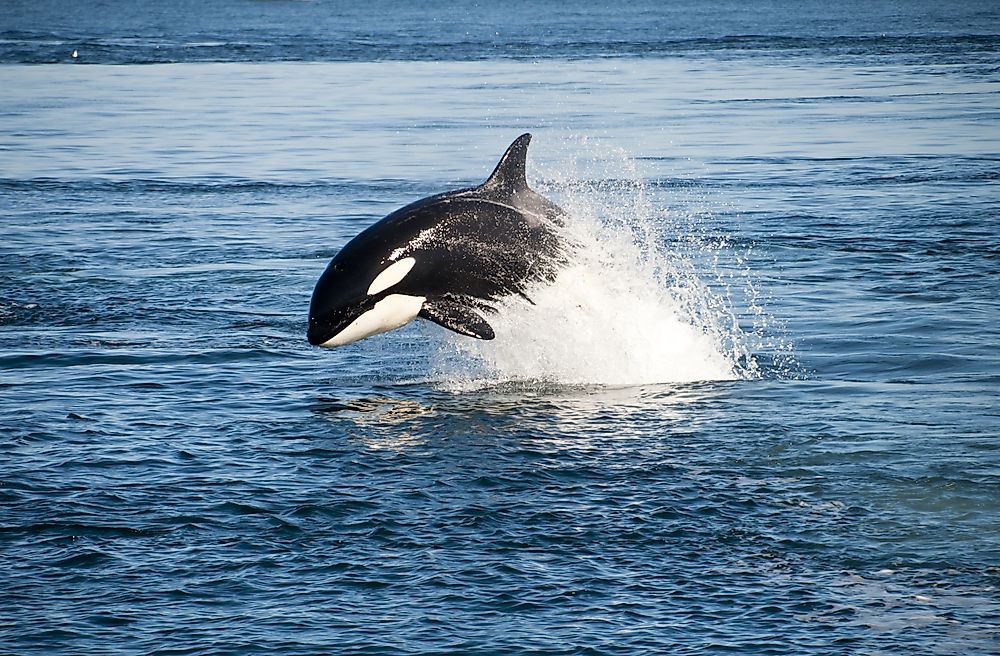
The Atlantic Sea is extensive, making upwardly about 29% of the total world bounding main waters. It is home to a broad multifariousness of aquatic plant life and marine animals, both vertebrates and invertebrates. The following animals have a significant distribution across the wide waters of the Atlantic.
Walrus
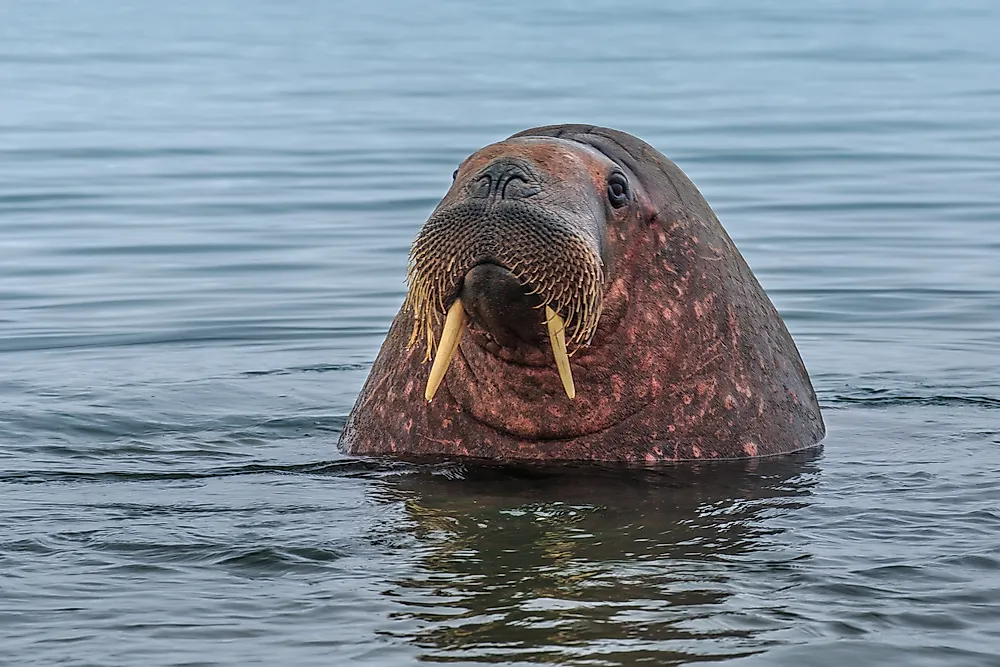
The Atlantic walrus species is generally found betwixt the Canadian Arctic to the due east and the Russian Arctic to the westward. There are about 25,000 walruses in this region with the number of adult walruses diminishing continuously. Marine animals, they are known for their elongated canines that resemble tusks. The animals are very social and are often found in groups. They are also known for their song communication amongst themselves. They feed on small-scale invertebrates and their life expectancy is between 30 and 40 years.
Spinner dolphin
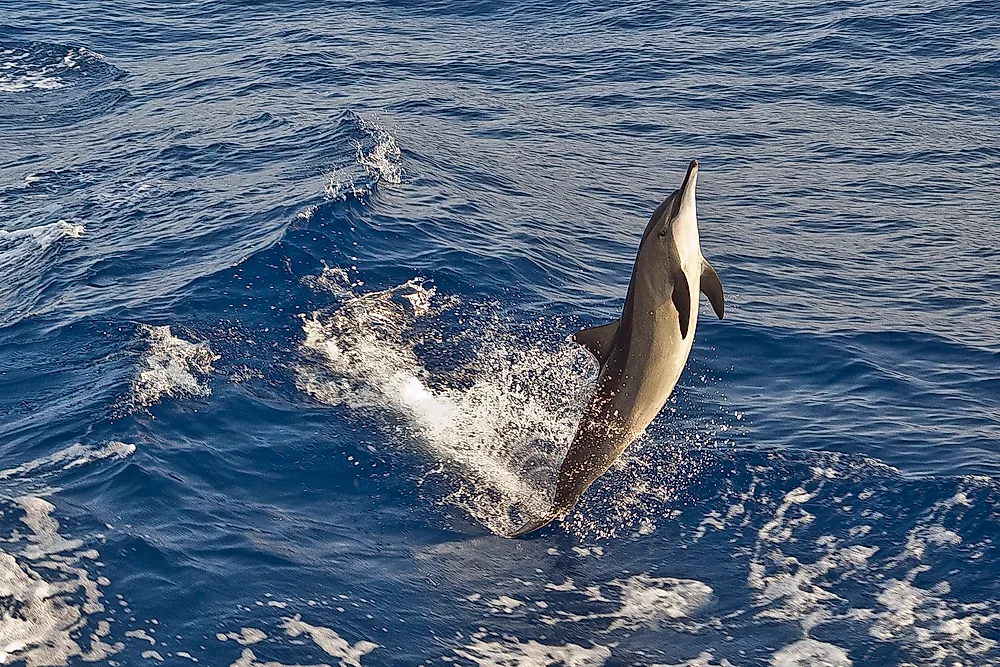
Dolphins, porpoises and whales belong to the aforementioned family unit. The spinner dolphin inhabits diverse subtropical and tropical marines around the globe and it is known for leaping out of the water and spinning in the air earlier hitting the water. They squeak and whistle using their blowholes to communicate amongst themselves. These dolphins have teeth although they practice not apply them to chew nutrient. They are highly sensitive to frequencies and they apply echolocation to map their surroundings and to hunt. They feed on fish, squids and crustaceans. Dolphins are more threatened by humans than other predators.
Manatee
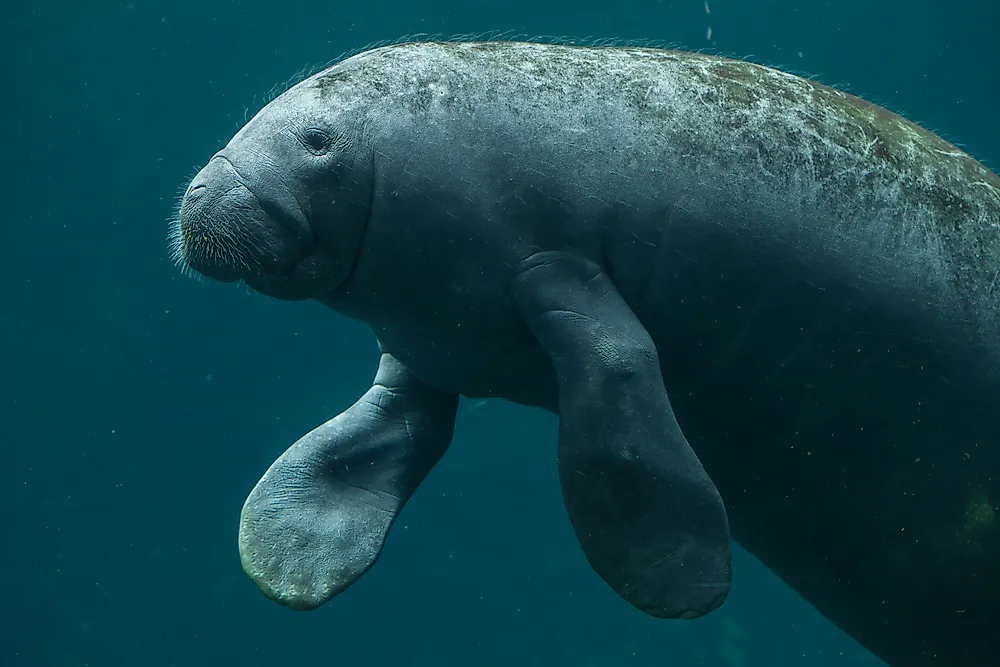
Manatees are also known equally sea cows and prefer to inhabit warm waters. They are mainly herbivorous, subsiding on water plants grown in seas. They are big in size and can grow to a length of 4 metres and nigh 590 kilograms in weight. One of their outstanding features is their flippers which resemble paddles. The W Indian species is by and large establish in the Caribbean area Sea and the Gulf of Mexico, especially in Florida while the West African species inhabits the Due west African waters.
Spotted eagle ray
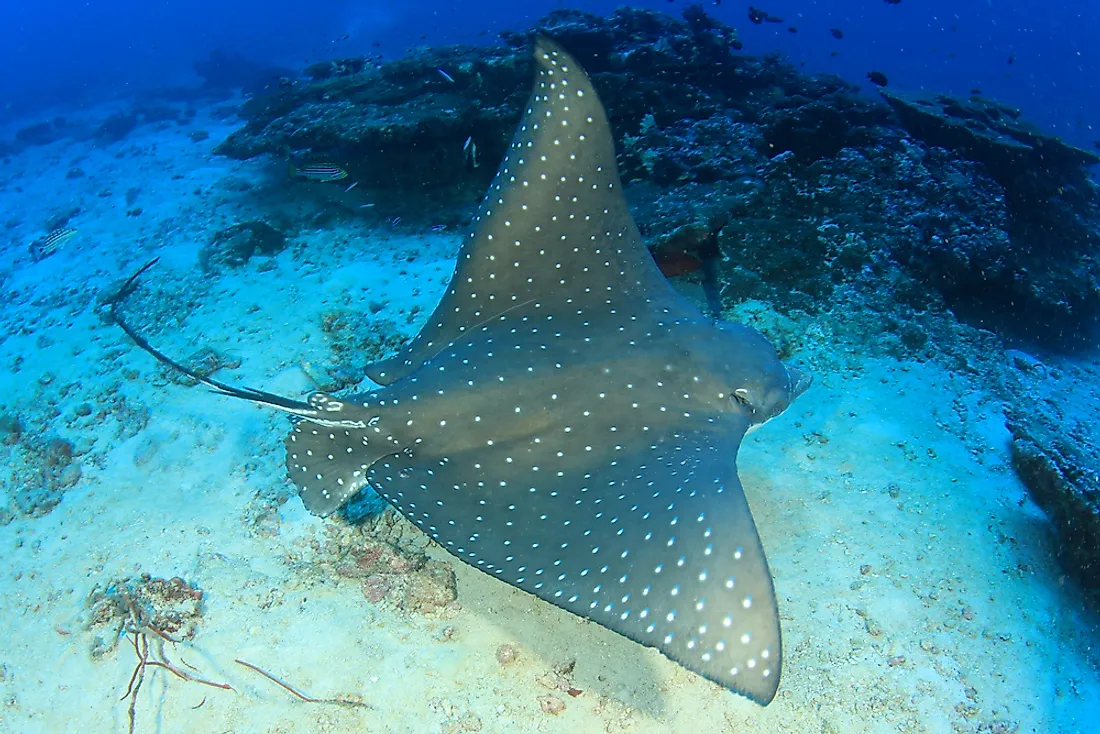
The species belongs to the course of cartilaginous fish and its population is mostly concentrated in the Caribbean and Mexican gulf parts of the Atlantic. The hawkeye ray has a longer tail compared to other ray species and its snout looks like the bill of a duck. Information technology preys on crustaceans and small fish and sometimes the ray uses its snout to search for food under the sea bed's sand. Although they are more often than not solitary, sometimes they can exist seen leaping in the air. Their population is believed to be near threatened hugely due to predation from sharks.
Bluefin tuna
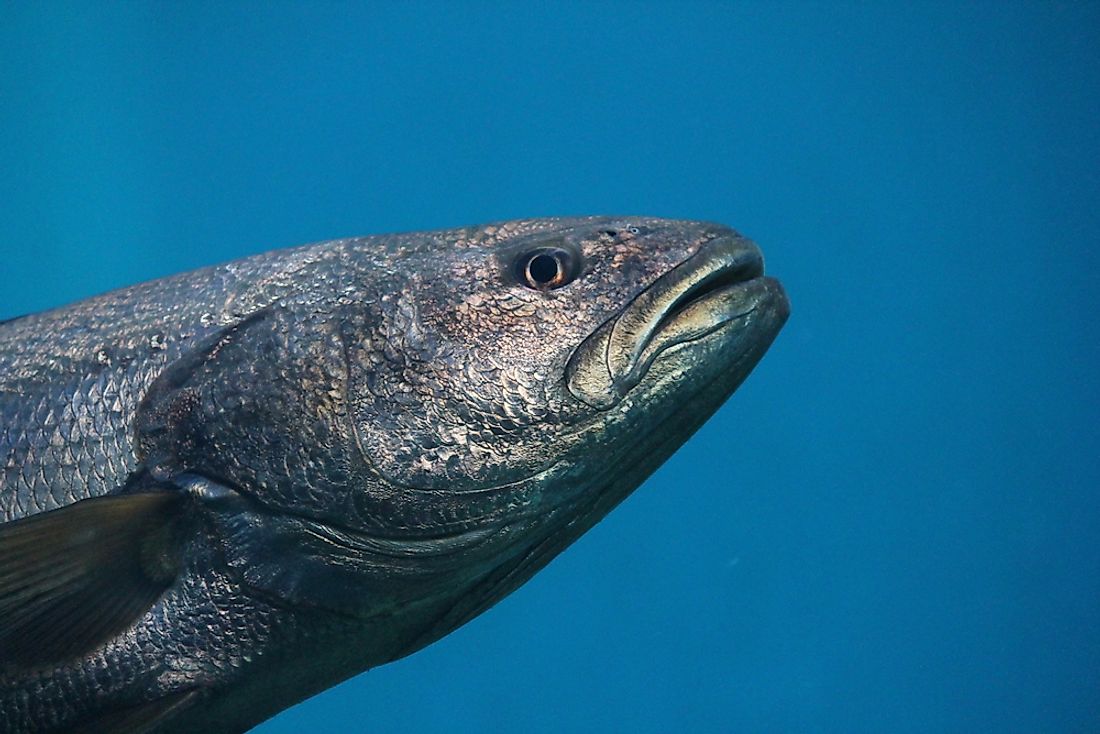
The fish is under threat due to overfishing and it is consumed extensively as sushi. It has high tolerance for disparity in temperatures since it is able to go on warm. Its metal blue colour blends with its environment and its streamlined body help information technology in building speed. The tuna preys on herring, mullet, mackerel, squids, crabs and shrimps. They are known for traversing the Atlantic Bounding main severally each yr. The largest bluefin tuna ever caught in the Atlantic weighed 679 kilograms!
Great white shark
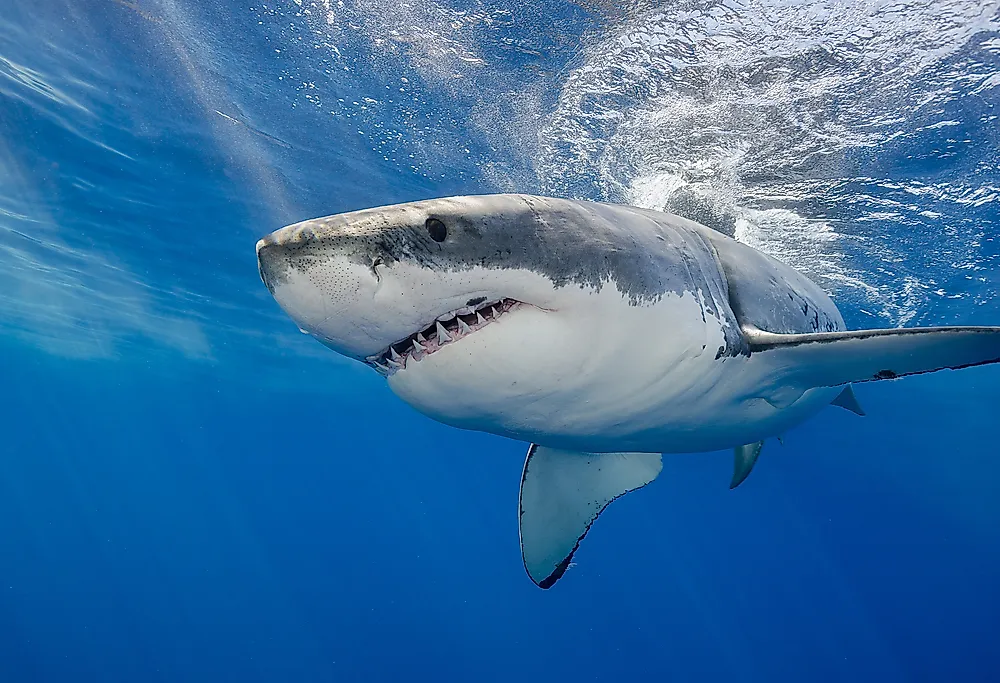
These sharks are endothermic and on top of the five mutual senses, they have electromagnetism sense. They have 300 big and serrated teeth which are triangular in shape for biting their prey. They are the largest predators in the oceanic waters and feed on other sharks, sea lions, seals, sea turtles, feces and fish. The life expectancy of the great white shark is 60 years but their ho-hum maturity process puts their population nether threat. The shark can grow upward to half dozen metres in length and counterbalance a maximum of ii,268 kilos. Gyer Island in S Africa records the highest population.
Green sea turtle
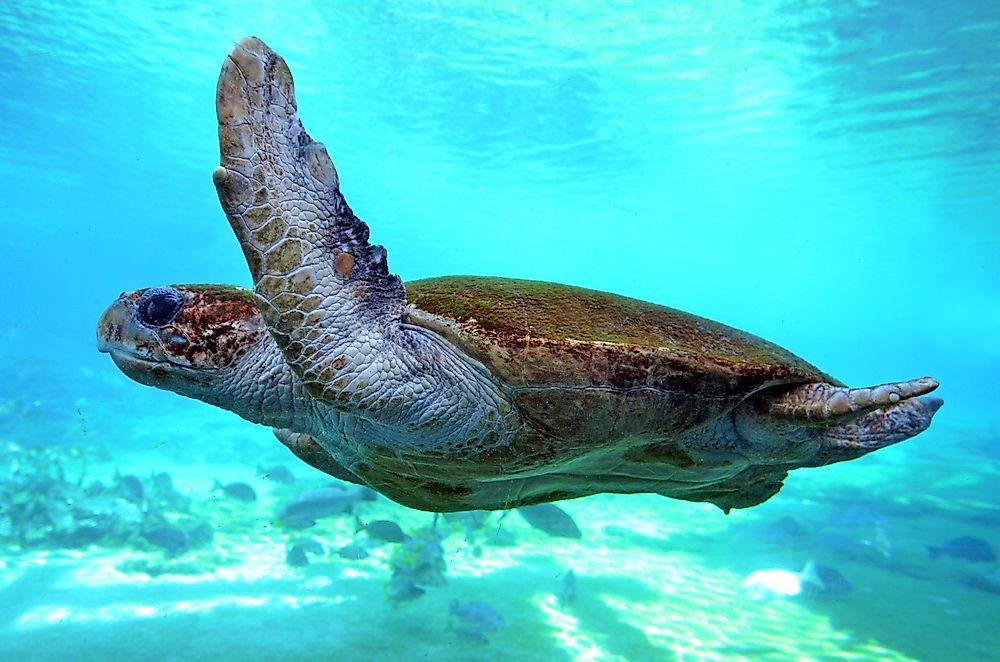
Green sea turtles are reptiles. Their name comes from a light-green deposit of fat nether their shell. Their carapace is smooth and their colour ranges in various shades of xanthous, green, grey, blackness or chocolate-brown. Of all turtle species, the green turtle has the largest beat out and it also changes colour later one-time. They use their arms to swim. While young, their diet is both herbivorous and carnivorous although the adults are primarily herbivorous, which distinguishes them from other marine turtles. On average, they grow up to i.5 metres in length and about 68 to 190 kilograms in weight.
Leatherback Sea turtle
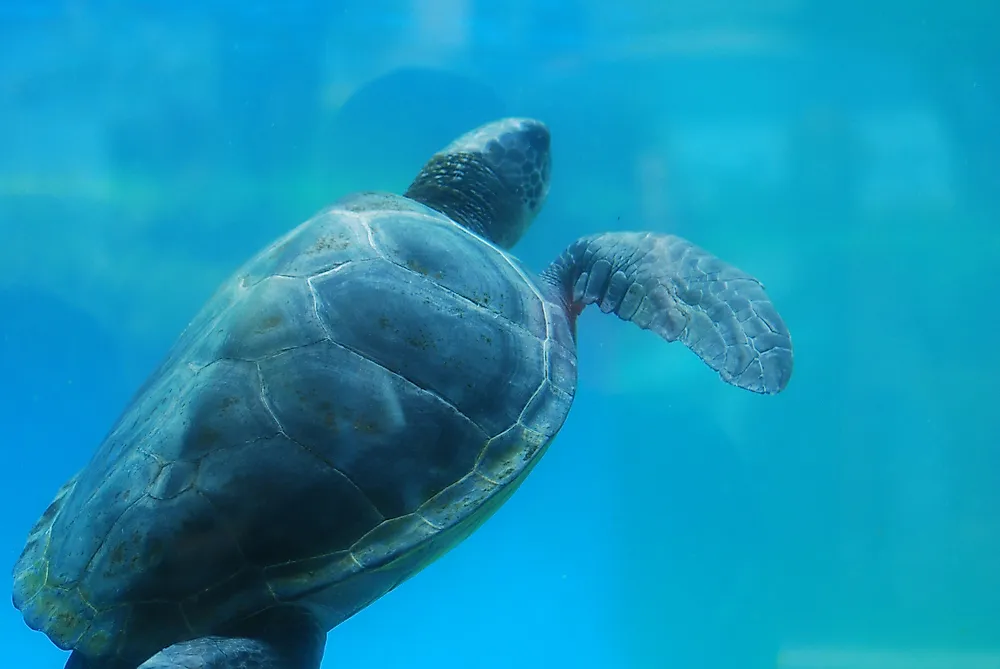
It is sometimes chosen the leathery turtle and information technology inhabits the southwest, southeast and northwest parts of the Atlantic. It can be constitute in deep waters of up to 1,280 metres. It is larger than other turtle species and its shell is less difficult making a bit flexible. It preys in colder waters and its fore flippers exceed those of other turtles in length. They are largely anti social and they do non take care of their young ones after hatching. The creature is cannibal and preys mainly on salp, jellyfish as well as crustaceans and fish.
Humpback whale
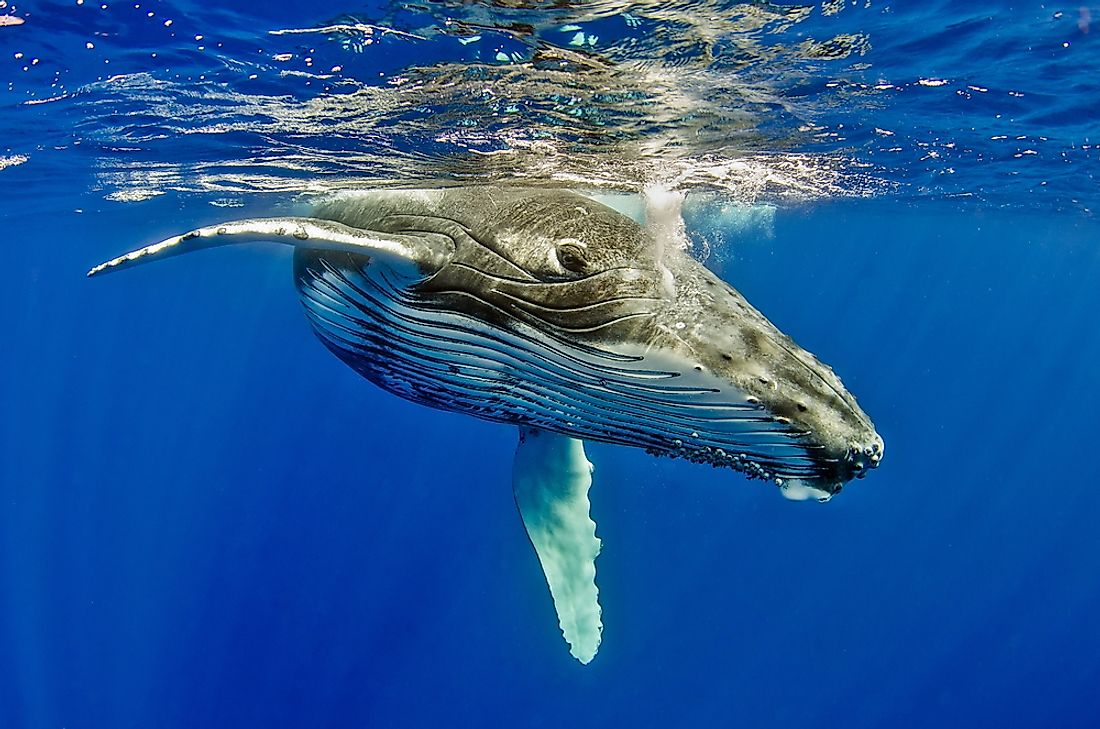
The name is derived from the dorsal fin of this whale which looks like a hump. They cover more distance in migration compared to other mammals, mainly for reproduction and feeding purposes. They feed on fish, plankton and krill and can eat up to 1,360 kilograms daily. They can weigh between 22,000 and 36,000 kilograms and they grow to near 18 metres in length. Females of this species grows larger compared to the males. Their bodies are long and streamlined and their pectoral fins are longer than those of other cetaceans.
Narwhal
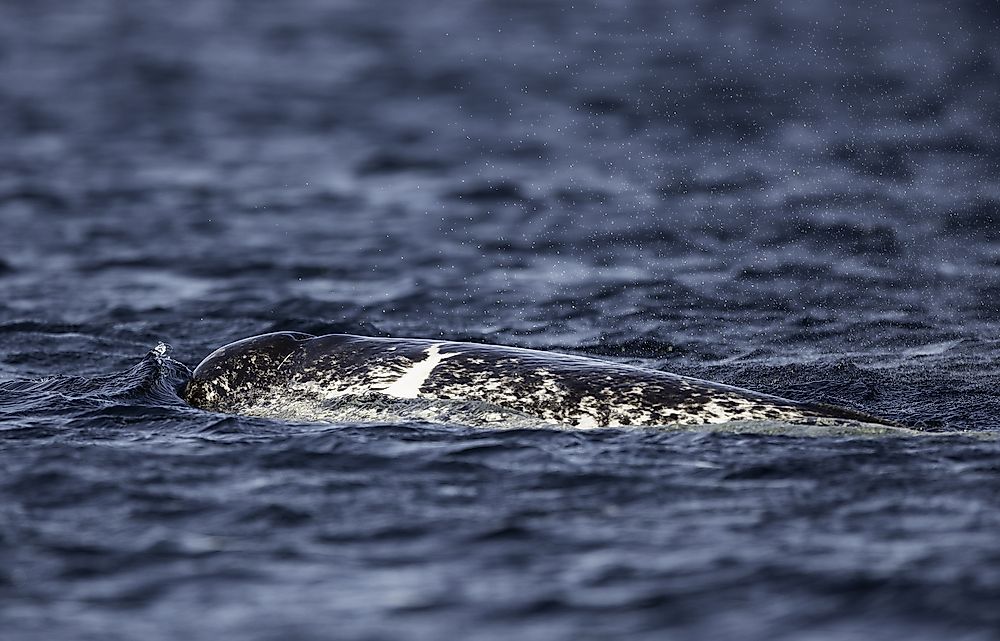
The tusks on the animals are normally overgrown left canines only in some cases the correct canine tooth may also develop into a tusk hence the creature will have 2 tusks. They lack dorsal fins merely accept irregular ridged extensions. On boilerplate, these animals can weigh between 800 to 1,600 kilograms and attain a length of betwixt 3.95 and 5.5 metres. They apply their tusks as sensory organs. They also use echolocation. They feed specifically on arctic and polar cod and halibut, shrimp and squid found in Greenland. They are threatened by walruses, polar bears, killer whales and humans.
Killer whale
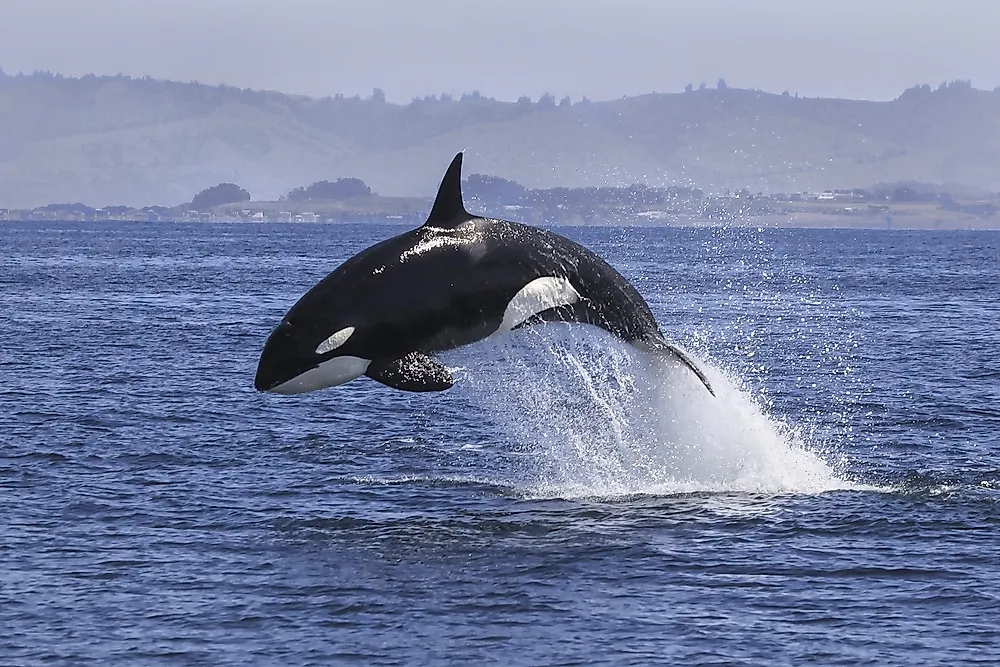
The killer whale is besides called the orca whale and it is the largest animal from the family unit of dolphins. They use their large pectoral fins as propellers and they have a fat eolith under their skin called blabber that they apply for insulation. They are hugely cosmopolitan - meaning that they feel a very big range - ranking 2nd after human beings. They are carnivorous and prey on nigh all animals including ocean birds, seals, fish, marine mammals, sea lions and squid. There is no known natural predator of this species. The adult killer whale tin accomplish a length of nine metres and an average weight of iii,600 to 5,000 kilograms.
Seahorse

A ocean horse is a bony fish and it belongs to the aforementioned class with other fishes such every bit tuna and salmon. They have a thin skin instead of scales and the crown-like spines on top of their heads are chosen coronets. They also lack teeth and a tummy hence they feed by sucking prey through a fused jaw and passing through their incompetent alimentary canal. They consume plankton and little crustaceans. They are able to cover-up past irresolute colour. Their breeding behaviour is peculiar since information technology is the male that gives birth.
Mediterranean monk seal
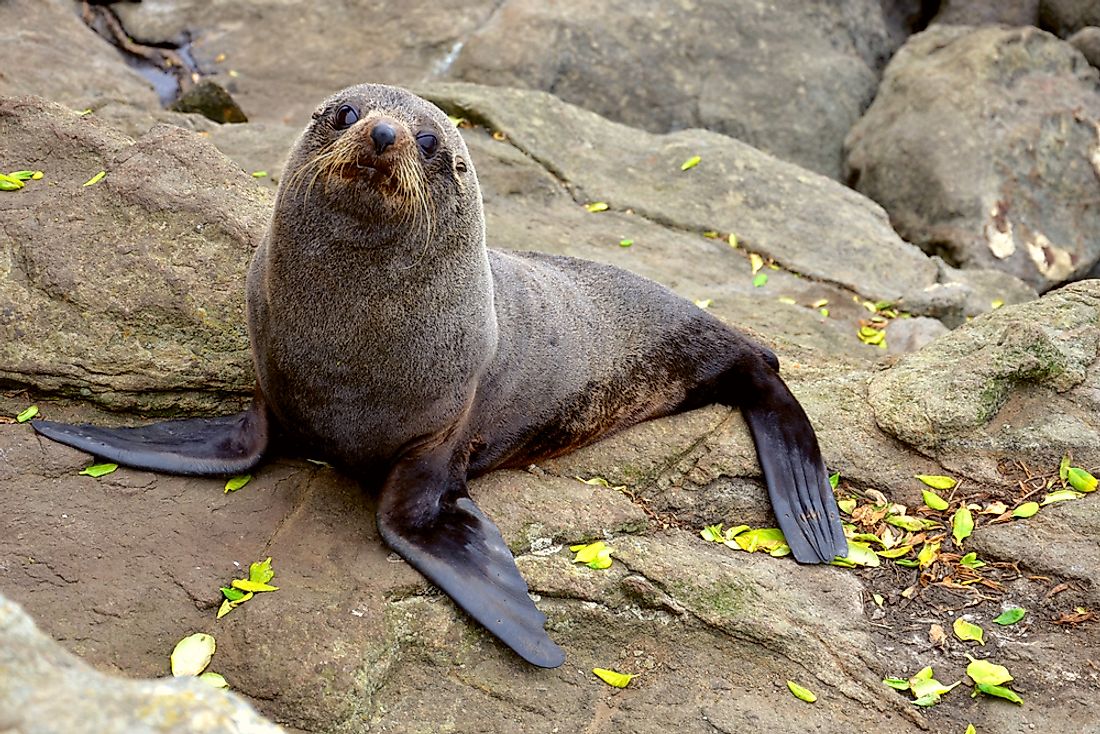
The species occupies the Cabo blanco and Madeira areas of the Atlantic waters and it is the rarest of all pinniped species. Its population globally is estimated to exist less than 700. They take short, flat and wide snouts with up facing nostrils different other seals. They also take short flippers with tiny thin claws and four retractable mammary glands on their abdomen. They take brusk hair which is replaced every 6 to eight weeks. They feed during the day consuming various fishes and squids, eels and octopus. Their life expectancy is a maximum of 45 years.
King penguin
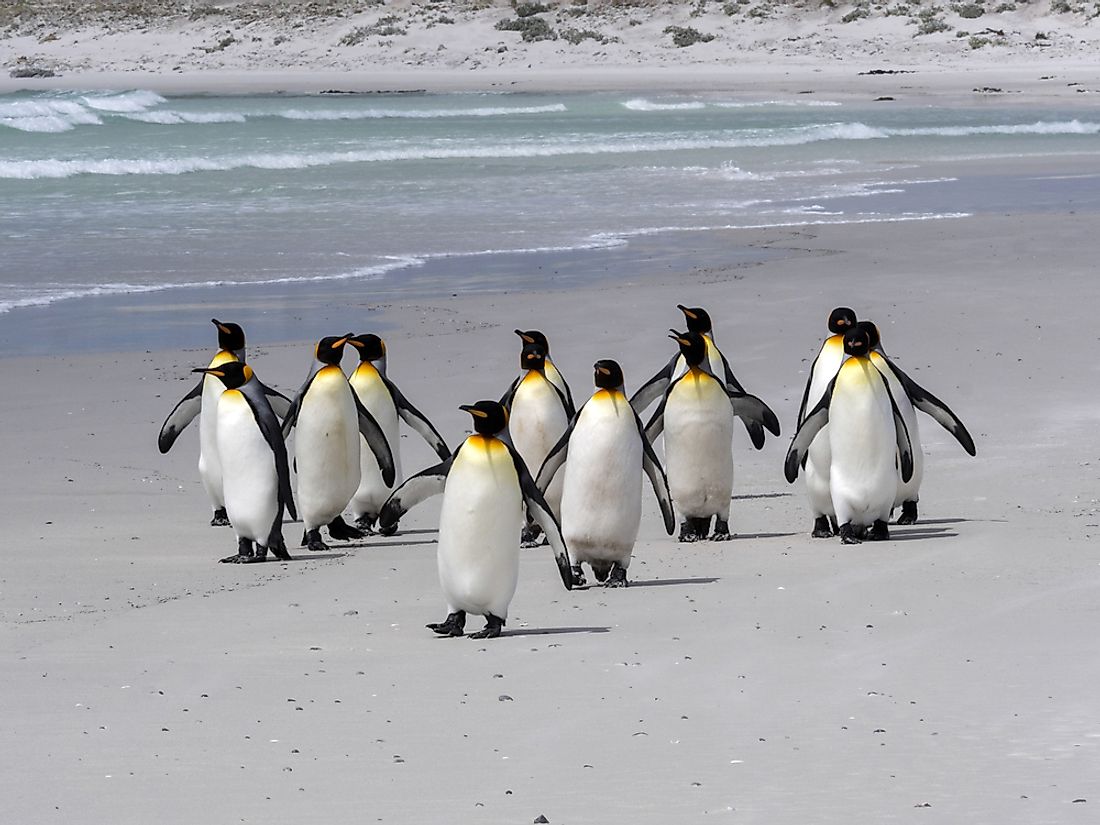
It is the second largest penguin species and it lives in the southern role of the Atlantic. While standing the penguin can measure upwardly to 1 metre and information technology can weigh betwixt 9.3 and xviii kilograms. Information technology feeds primarily on fish and sometimes on squid. The penguin tin can dive to between 100 and 300 metres below the sea to hunt and can stay under water for 5 minutes before resurfacing. It is a flightless bird similar other penguins and it either walks or slides on ice. The main predators of the species include aquatic mammals and other birds.
Lemon Shark
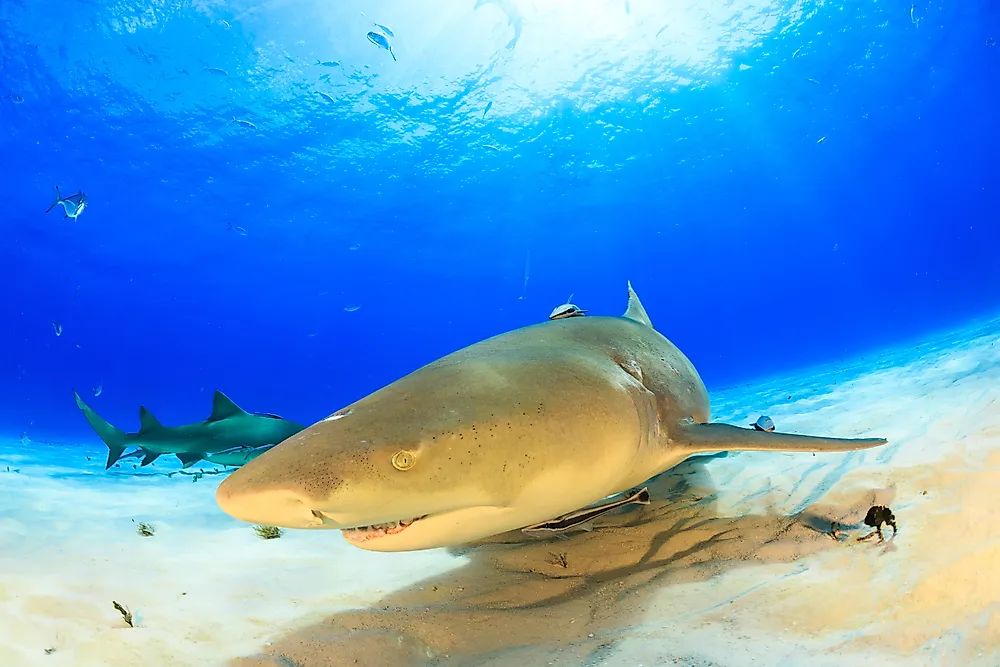
The species occupies shallow waters not far away from the shore. Their name comes from the yellowish brown to olive dark-green color of their torso. Their snouts are short and round. Their sense of sight is poor while that of aroma is heightened. They are night hunters and they employ smell and an electro-receptor system to locate prey. They eat bony fish, seabirds, smaller sharks, crustaceans and molluscs. These sharks can grow every bit heavy as 250 kilograms and attain a length of 2.5 to 3 metres.
Source: https://www.worldatlas.com/articles/what-animals-live-in-the-atlantic-ocean.html
Posted by: sansomcombehe.blogspot.com

0 Response to "What Type Of Animals Live In The Atlantic Ocean"
Post a Comment